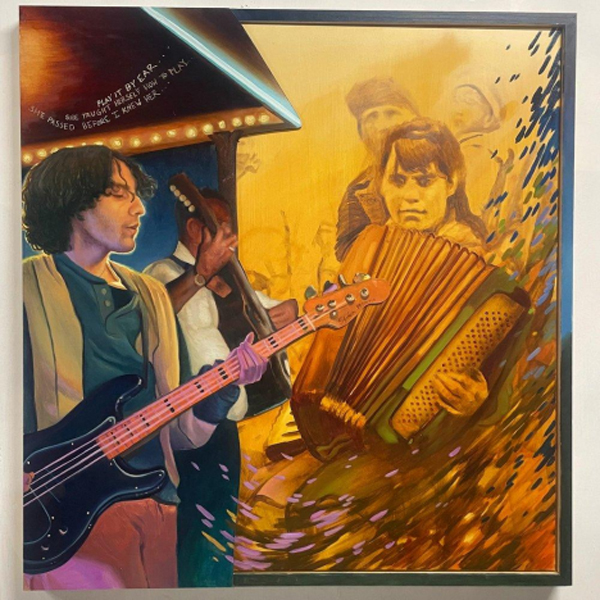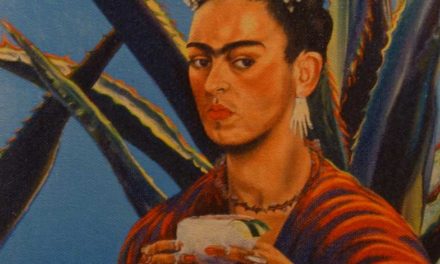Jesus Treviño grew up in Brownsville, Texas, a mid-sized town at the southmost point of the U.S.-Mexico border. His art reflects growing up in the borderland region with its cactus and intense brush country along the Rio Grande River. His first serious study of art came when he attended Texas Southmost College in his hometown. While learning how to draw and paint, he also became familiar with the works of Latino artists from Texas. He recalls drawing inspiration from the Chicano “bato” painting series of Cesar Martinez and the powerful photography of Deliah Montoya. Montoya portrays the Southwest people whose heritage is a mix of Native American, Aztec Mexican, and Spanish lineage.
Treviño developed a great interest in art following a summer art program in Florence, Italy. Upon receiving a degree in art from the University of Texas-Brownsville, he
enrolled in an MFA program in Painting and Drawing at UT Austin. In his first year of graduate school, he discovered how little he knew about American art. Treviño credits UT Austin art professor Scherezade Garcia-Vazquez Garcia, a native of the Dominican Republic, with helping him rediscover his Latino heritage.
Treviño developed a great interest in art following a summer art program in Florence, Italy. Upon receiving a degree in art from the University of Texas-Brownsville, he
enrolled in an MFA program in Painting and Drawing at UT Austin. In his first year of graduate school, he discovered how little he knew about American art. Treviño credits UT Austin art professor Scherezade Garcia-Vazquez Garcia, a native of the Dominican Republic, with helping him rediscover his Latino heritage.
For many years Treviño felt disconnected from the Mexican side of the Borderlands. He spoke recently about his efforts to gain a greater understanding of Mexican life. “I am engaging familial histories: histories of injustice and collective memory by building a landscape of painting and art objects which hold the memory of what was and reveals traces of what remains.”
In a recent exhibit, “La Carreta Fading in the
Sun–memories of a family ranch in Matamoros,
Tamaulipas,” Treviño introduces seventeen pieces varying from painting to sculpture. The artist expects people to “let their imaginations fly and, most importantly, think of these artworks as if they were part of their own remembrances or consequently, reminisce about their personal memories as if they were alike to these art pieces.”
Every year the celebration of Hispanic Heritage rises to new heights. It is exciting to see young and established artists recognized. Jesus Treviño is one of the featured artists in the Chicano Park Museum Exhibit in San Diego titled Son de Allá y Son de Acá.
Latino Artist Jesus Treviño’s Borderland Perspectives










